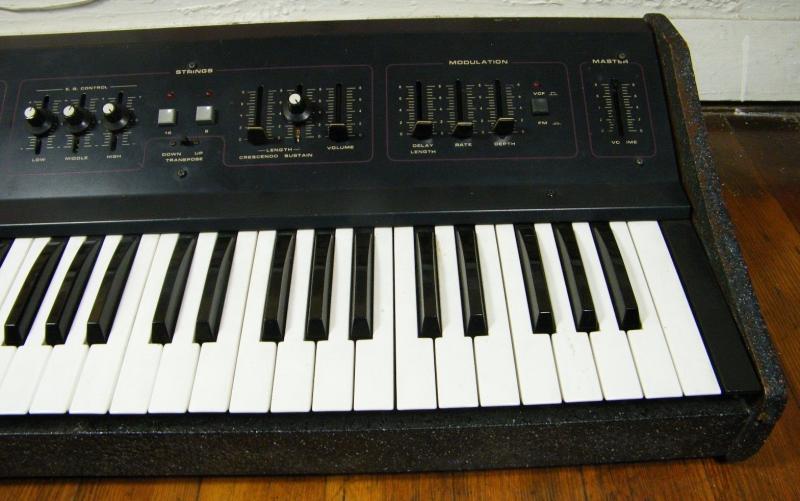Filter on ALL, SYNTH, DRUM, SAMPLER or MISC |
Total list currently 2405 items in 330 Brands |
Crumar | Performer |
Description | The Performer is a polyphonic analog Strings and Brass machine produced at the end of the 1970's by the Italian synth company. It is slightly compact with just 49 keys. But it is fully polyphonic - you can play all 49 notes simultaneously! Programming is simple and clearly laid-out with just 15 sliders and a few buttons. A solid black chassis and wood end-cheeks round out this classic and often overlooked string machine. The Performer is best remembered for its Strings. A simple 3-band equalizer with high, mid and low sliders can be used to give the strings shimmering sparkle or moody dark timbres. The Strings section uses two oscillators per voice with 8' and 16' settings. Simple Attack and Sustain sliders give you some control of your string's envelope settings. The Brass section is less exciting. It uses a single oscillator with just a square wave to generate a weak Brass sound. It has a low-pass voltage-controlled filter with resonance, but it too is pretty weak. Simple Attack and Decay sliders control its limited envelope settings too. The LFO is pretty nice, with delay length, rate and depth control. It can modulate both Brass and String sections and can be routed either to the VCF or pitch. There are three outputs on the back: main output, brass output and signal output (for external processing) as well as CV and Gate connections. In 1983 the Performer 2 was introduced. First of all the weight in the Performer 2 has dropped considerably, thanks to a less woody body and a decently appealing design. Also the connections available in the rear panel have decreased as the STRINGS section has lost the three-band equalizer; But now you can apply the LFO modulation to one of the oscillators by offset the intonation with the active one in the STRINGS section. The Performer 2 also features the most stable oscillators, and the new circuits are likely to not create frustrating noise and unpleasant noise, which is, however, to the detriment of old and pure analog sound. |
| Brand | Crumar |
| Model | Performer |
| Device | Synth |
| Type | Keys |
| Engine Type | Analog |
| Engine | VCO Preset |
| Voices (max) | 49 |
| Multitimbral | 2 |
| Oscillators | 3 |
| LFO | 1 with delay length, rate and depth controls |
| Engine Detailed | 1 for Brass (square wave); 2 for Strings (8' and 16') |
| Filter (VCF) | Simple low-pass with resonance for Brass; 3-band Low/Mid/Hi equalizer for Strings |
| Envelope (VCA) | Attack/Decay for Brass; Attack/Sustain for Strings |
| Memory | 2 Preset sounds: Brass and Strings |
| Keys | 49 |
| Key type | Keys |
| Velocity | No |
| Aftertouch | No |
| Audio | main output, brass output and signal output (for external processing) |
| CV-gate | CV/GATE |
| Produced: | 1979 - 1984 |
| Legend: | Obvious | Y: Yes, N: No, N/A: Not Applicable | |
| VCO | Voltage Controlled Oscillator | DCO | Digital Controlled Oscillator |
| LFO | Low Frequency Oscillator | Sub | Sub Oscillator |
| VCF | Voltage Controlled Filter | VCA | Voltage Controlled Amplifier |
| Velocity | As with a piano, the harder you hit a key, the louder the sound, unlike most organs which always produce the same loudness no matter how hard you hit a key. | Aftertouch | Pressing a key after you activated it. Channel Aftertouch, no matter which key, it will send a Channel message. Poly Aftertouch, sends the pressure per key instead of the whole channel. |
| Values for OSC, LFO, Filter, Envelope are per voice unless stated otherwise. | |||





